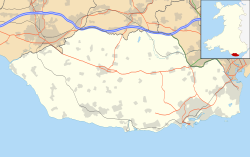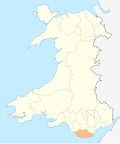Boverton
| |
|---|---|
 Boverton village shops | |
Location within the Vale of Glamorgan | |
| OS grid reference | SS983685 |
| Principal area | |
| Country | Wales |
| Sovereign state | United Kingdom |
| Post town | Llantwit Major |
| Postcode district | CF61 |
| Police | South Wales |
| Fire | South Wales |
| Ambulance | Welsh |
Boverton (Welsh : Trebefered) is a village located to the east of Llantwit Major in the Vale of Glamorgan in South Wales.










